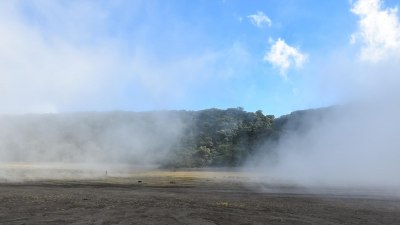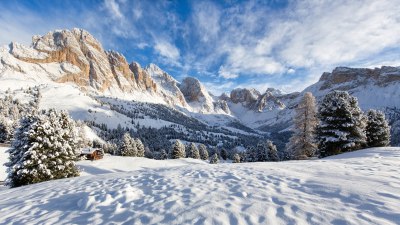Why Sometimes Snow Melts in Midair Before Reaching You
Discover the science behind why snow occasionally melts in midair, altering winter weather experiences.

This image was created with the assistance of Freepik
Have you ever experienced the strange phenomenon where it seems like snow is melting in midair before it reaches the ground? This curious event, though seemingly peculiar, can be explained through several scientific principles that govern the behavior of snow and atmospheric conditions. Understanding why snow sometimes disappears midair can deepen your appreciation of the meteorological intricacies during winter.
The Basics of Snow Formation
Before examining why snow melts in midair, it’s essential to understand how snow forms. Snowflakes are created in clouds under freezing conditions when water vapor condenses into ice crystals. These ice crystals grow as more water vapor sublimates onto them, forming a variety of complex shapes and sizes. When these snowflakes become heavy enough, they fall towards the ground, creating those beautiful, picturesque winter scenes we all adore.
Understanding Melting Processes
Melting occurs when solid ice or snow changes into liquid water. The process requires energy, typically from heat. In the case of snowflakes falling through the atmosphere, several factors influence whether they will reach the ground intact or if they will melt prematurely.
Temperature Gradients in Cloud Layers
A crucial factor in determining whether snow will melt midair is the temperature gradient in the various layers of the atmosphere. For instance, if snowflakes form in clouds at high altitude where temperatures are below freezing but then pass through a warm layer of air as they descend, the warm air can cause the flakes to melt. This warm layer can exist especially during fluctuating weather patterns where warmer air masses intrude into colder air regions.
Humidity Levels' Role
The humidity of the air also plays a significant role in the melting of snowflakes. When snowflakes fall through drier air, especially in areas with lower humidity, the surrounding air can absorb moisture from the snowflakes. This process speeds up melting and can cause the snow to diminish before it ever reaches the ground. Thus, higher humidity may help preserve the integrity of the snowflakes as they fall.
The Size of Snowflakes
The size and structure of a snowflake can influence its melting rate in midair. Larger snowflakes possess more mass and are more likely to survive the warmer air as they fall. Conversely, smaller or lighter snowflakes may disintegrate or evaporate faster when passing through warmer or drier conditions.
Wind and Atmospheric Conditions
Wind can also impact snowflakes as they fall, influencing their trajectory and exposure to different temperatures. Strong winds may lift snowflakes higher into the atmosphere where they can encounter varying air temperatures. If the snowflakes are exposed to warmer air currents, they are more likely to melt before reaching your location. The action of wind can change the local microclimate, affect how long the snowflakes are suspended in the air, and alter their chances of survival.
Environmental Factors
Believe it or not, even ground-level conditions can contribute to whether snow reaches you as a melted mass of water rather than a pristine snowflake. For example, urban areas often have heat islands due to human activity and infrastructure, producing localized warming that can lead to the premature melting of snow before it hits the ground. Areas with asphalt, concrete, and buildings can absorb heat, raising the air temperature and increasing melting opportunities.
Effects of Atmospheric Pressure
Atmospheric pressure can influence the behavior of snowflakes. As air pressure decreases, which occurs with an increase in elevation, the freezing point of water also changes slightly. In some cases, this can increase the likelihood that snow will melt in midair due to unfavorable conditions created at different altitudes.
The Role of Sublimation
Sublimation is the process where a solid turns directly into a gas without becoming liquid first. Snowflakes can undergo sublimation when the air is dry enough. The surrounding air can pull water vapor directly from the snowflakes, causing them to shrink and disappear before they reach the ground. This process is common in relative humidities below around 60%. If the air is too dry, it can rapidly negate the snow’s mass.
Factors Influencing Weather Patterns
The larger weather patterns, such as the presence of pressure systems, can influence how temperatures stratify in the atmosphere. For example, warm fronts may push into an area, raising the temperature for a short duration and causing snowfall to experience melting before reaching the ground. On the flip side, colder fronts can carry temperatures conducive to allowing snow to survive its journey downward.
Distinction Between Snow and Rain
It’s also essential to understand the difference between snowfall and rainfall in these discussions. When conditions are marginally warm, what is initially snow can transition into rain as it descends through warmer air. This transition can be quick, leading to false perceptions of snow melting midair.
The melting of snow in midair before it reaches the ground is a fascinating aspect of meteorology, influenced by a combination of atmospheric temperature gradients, humidity levels, wind patterns, and environmental factors such as urban heating. Understanding these elements enhances our appreciation of the complicated dynamics of weather and the magical experience of snow in winter. Next time you witness snowflakes evaporating in midair, you can ponder the science at play behind that temporary spectacle.
Weather is a complex phenomenon, and snowfall is just one piece of the puzzle. Engaging with these scientific principles not only informs us about our immediate environment but also enriches our connection to the world around us. So, when you see those fluffy snowflakes dancing through the air, remember there’s a wealth of science behind each one!











